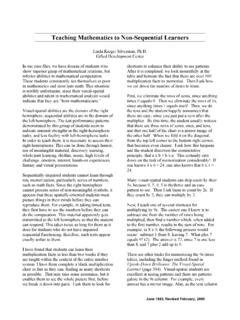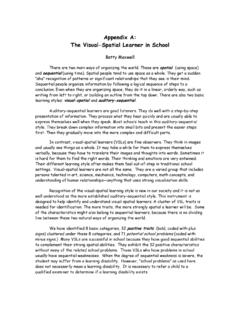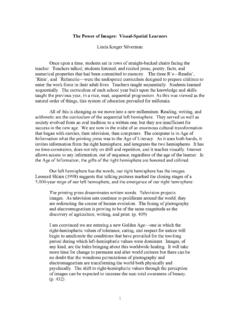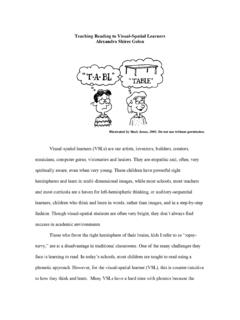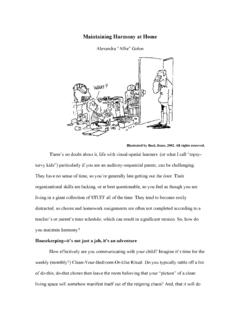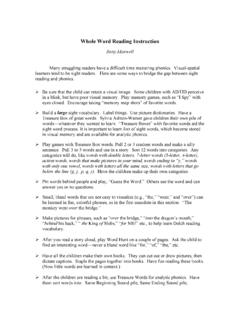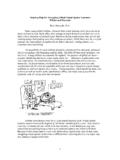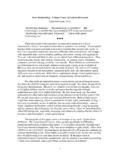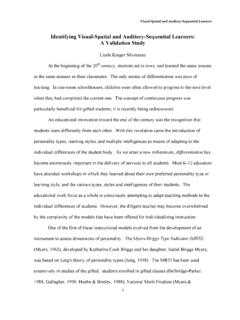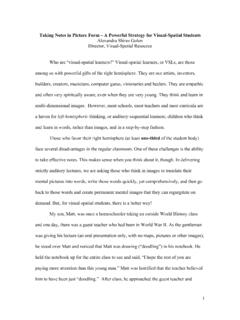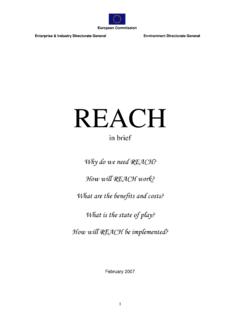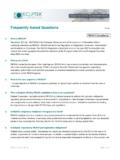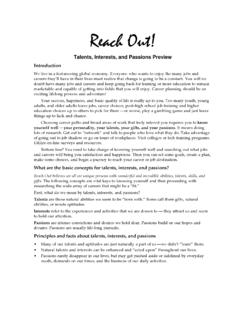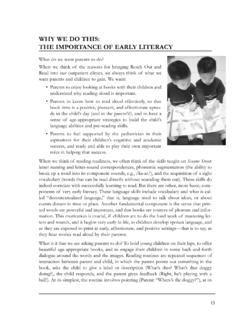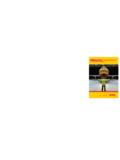Transcription of How to reach and teach the visual-spatial learner
1 How to reach and teach the visual - spatial learner Penny Choice Before I read Linda Silverman s book, Upside-Down Brilliance: The visual - spatial learner , I didn t even know there was such a thing much less that I WAS one! (A visual - spatial learner has a preference for learning through the right hemisphere of the brain instead of the auditory and sequential approach to education commonly used in schools.) But what a wake-up call I have had since then. I finally realized why I had such difficulty in mastering difficult material in school. The problem began with the fact that most material throughout my elementary and secondary education was easy! I just had to read the text (and often I didn t even have to do THAT) and I had it. The teachers repeated and repeated the same information, over and over again, so it wasn t much of a challenge.
2 So I sort-of slid my way through school not ever having to develop an understanding of what it meant to handle difficult material. And then I got to college! And I woke up to a whole new world: A world where learning could be a struggle. I had a very difficult time my first few years and I didn t know why. I remember attending lectures in a giant lecture hall at the University of Wisconsin. I would take notes like everyone else I saw there. I took them down, faithfully, and then returned home to study. But a strange thing occurred: I discovered that I had a great deal of difficulty passing the tests. I would go over and over my notes and study them over and over. I would read the texts but I never figured out what the professor wanted . I was totally confused. Finally, I checked with someone in the same classes who seemed to do very well.
3 Lo and behold, her notes were very different from mine. Upon analysis, I learned that she had a great deal of information written down in her notes that I didn t have. That was when I learned that I was not hearing the whole lecture that the professor was giving. I was missing things and therefore didn t have a clue what the professor considered important (which at times was very different from what the text stated.) I couldn t figure it out. What was happening? Was I not hearing what the professor was saying? How could this be? I knew I had good hearing because I was musical and had perfect pitch (a genetic ability to reproduce specific sounds accurately and to know what notes were being played on a musical instrument) so I became very frustrated. With help from my friends, I developed some strategies to get me through.
4 First, I bought a tape recorder and taped my professors lectures. Then I would bring the notes and tapes back to my room and play them over and over, filling in the blanks in my notes where I had heard the lectures incorrectly. I was astounded at how much I missed! It made all the difference. It was obvious that I had an auditory processing deficit and needed help to overcome it. But I didn t have a clue that there was a type of learning preference called the visual - spatial learner . I just knew I had a problem. 1I then developed a system for myself where I used different colors in texts and notes to highlight the materials. It seemed to help me remember better when asked to recall information. For example, I would use one color for each category, or topic, and different colors for sub-topics and other things to remember.
5 My texts and notes became very visually stimulating, and when I took tests, all I would have to do is visualize the page and color(s) and I was fine! Over time, I went from a average up to a and by grad school I was a straight A student. Another strategy I developed was a kinesthetic one. My science classes gave me specific challenges and the difficult material was hard to master. So I created a mental square on the floor and physically moved from one spot to another, associating my physical location on the square with the material I had to learn. So whenever I had to utilize the information, I would visualize the square and where I moved within it to recall the material. That trick transferred over quite effectively in many classes and situations over the years. Another trick I learned (remember I am a bit musical) was to memorize material by creating a musical melody around it.
6 I noticed there were advertising jingles that really got stuck in my head. So I developed a learning strategy for myself. I would take a series of numbers, or words, set them to music, and I never forgot them. (I even used this trick with my own children when they were young and were attempting to learn their telephone number, address, and other important information. It worked like a charm, and they can still sing those songs back to me as adults! They never forgot.) Advertisers know this strategy well, and use it very effectively to sell their products. Try it for yourself; what jingles can you remember? Now the trick becomes one of transferring that strategy into education for those students who learn differently. However, I was frustrated that I had not developed effective auditory skills when I was young.
7 Now that I knew I had weaknesses in that area (auditory processing deficiencies), I became determined to remediate that skill. So since that time, I have rented books on tape and forced myself to develop those skills doing something I enjoyed reading! In fact, I still do that today check out my car! I always have an auditory book going, and it s wonderful! I am working on my auditory processing weakness while enjoying learning through books. The problem is a child doesn t know he/she has a problem until it is discovered! It took me until college to figure out I had a problem because school was so easy, I didn t have to struggle. And I didn t have a clue to my learning preference. This is an excellent case for providing appropriate educational challenge for students in schools so that they can develop the skills they will need to survive in their own lives!
8 This brings me to another challenge I have dealt with in my journey towards understanding the visual - spatial learner in my own life: Following map directions to get from location to location. This has been a special challenge for me because my occupation has required me to drive to individual schools and locations all over and in 2very unfamiliar locations. I would ask for directions and would get something rather terse in return such as: Take the 294 North to 120 Take 120 West to 45 Take 45 North to Washington St. etc. I always got lost! Then one day a person with obviously right-hemispheric preference added details like the McDonalds and Shell stations on the corners, etc. The picture started to clear. And finally, I learned to always get a detailed map (like from The Chicago Tribune map book) to draw on and add the landmarks of interest.
9 Then I would commit the map to memory. It was amazing. I had the pattern in my head and I no longer got lost. This led me to another discovery. visual - spatial learners MUST get a picture in their heads. This takes time. So now, when I know I have a VSL to work with, I give them extra time to convert knowledge into pictures (because it takes longer to GET the picture, but then it s instant recall). So students who have right-hemispheric preference need a different approach for learning. The first directive for all teachers and parents is to understand that: ALL STUDENTS MUST HAVE CURRICULUM AT THEIR CHALLENGE LEVEL so that they develop the skills they need. And it is imperative for appropriate challenge so that any problems might surface early. Far too many bright students develop coping strategies for masking learning problems which may surface only at the time they finally reach their challenge level.
10 All of us know people who coast through school only to crash and burn when that time arrives. I was fortunate: I found support to guide me to awareness and mastery over my learning problem. But what about others? There are specific strategies that are very effective with the visual - spatial learner in school. Ones that helped me were: 1. Taking time to create a visual image of learning material: Getting the picture makes all the difference 2. Use colors to create categories and make information stand out 3. Find ways of organizing material visually 4. Use music (or any of the Fine Arts for that matter) to help learning 5. Create kinesthetic connections Also, it is important to remediate through strengths. I realize that we still live in an auditory world. So those of us with auditory weaknesses should develop strategies to strengthen them.
